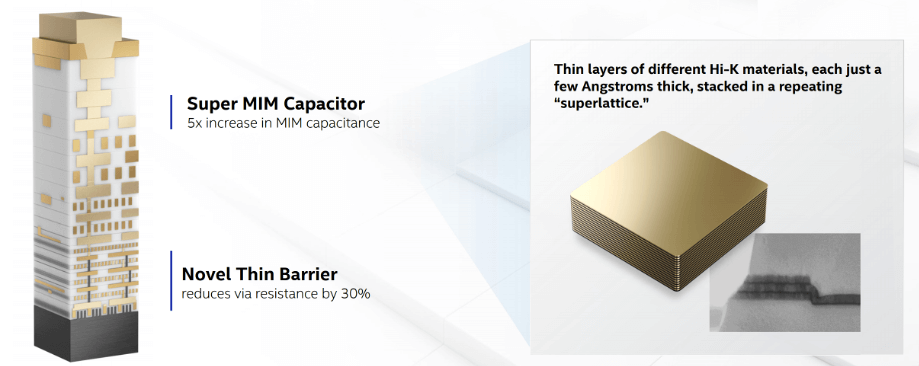Intel has been in the news for the first weeks of 2021. While this is not unusual due to CES and the associated announcements of new processors for the latest and greatest consumer products, this year has been a bit different. There have been multiple storylines throughout 2020 rolling over into 2021 about Intel’s demise and failure to execute from a technical aspect. There has been concern that the company might outsource manufacturing to TSMC, which for some reason everyone has been thinking is a competitor, instead of a foundry that produces chips for whoever is willing to pay the price.
Late to the Game
The year ended with Intel under pressure mostly from the press and technical community for the fact they had not yet released their 7nm processor, and the 10nm was rolling into production much later than anticipated. The company had also faced CPU and server chip shortages in 2019 and early 2020 as a result of strong demand. As a side note, AMD also faced CPU shortages so it is an industry phenomenon, not an isolated instance related to just Intel.
While there is no doubt that Intel is late with releasing its latest and greatest chips at the smallest dimensions possible, we need to be careful mixing metaphors. Yes, it has been late in launching both 10 and 7nm, but research and development have not been standing still.
Intel Architecture Day: Alternatives to 7nm
At Intel’s Architecture Day, the company rolled out a Super Fin transistor (Figure 1) A metal-insulator-metal (MIM) capacitor (Figure 2), and improvements in the metal stack, using cobalt, that improved transistor speed and chip performance supposedly to be competitive with the TSMC 7nm chips. The industry expects Intel to release 7nm in the 2022 timeframe, will this put it behind the technology curve as time goes forward, difficult to say. A more important question may be: does Intel need to have the leading-edge process technology in manufacturing to be competitive in the world of computing and AI? More on this later.

Intel Strategy Through an Economic Lens
While the analysts are beating Intel up about being late with technology launches, there is an economic side to the story. Intel, by extending their 10nm process that uses 193i steppers and multi-patterning, does not have to invest in EUV lithography at the moment. With EUV systems’ average selling price running close to 150 million euros compared to a 193-immersion system of around 60 million euros, there are considerable savings in capital expenditures, even with the multiple patterning steps needed with 193i technology.
If you look at the economic advantages of using 193i and remaining at 10nm with a chip that is as fast if not faster than the competitions in PCs and servers, most CEOs would favor saving capital costs rather than charging forward. It also means that Intel can let the EUV technology mature a bit before rushing in and experiencing production headaches that come with new processes. We already know they have had enough of that with the problems of getting 10 and 7nm into production.

Something else I see missing from the dialogue is that Intel also continues to be a leader in R&D in transistor technology. At the 2020 VLSI conference and IEDM conference, Intel presented on next-generation transistor technology using nanoribbon, and heterogeneous integration to create a stacked nanosheet transistor. On January 12, the IEEE spectrum reported a joint project by Intel, and IMEC producing a spintronic device, which is essentially a single-electron transistor that would potentially take the industry beyond 1nm.
However, with IMEC being a research consortium and TSMC being a member, TSMC will likely also eventually have access to this technology, when TSMC chooses to move to that level of R&D. If one looks at the level of R&D investment and the projects coming out of Intel, as well as IBM, I see a disconnect in the diatribe that the US is losing its technical prowess in semiconductor chips. The US industry may be losing its grip on leading-edge manufacturing, but R&D seems to be in good shape.
TSMC Manufacturing Intel Chips
The press has made a lot of noise about TSMC manufacturing Intel chips. “Spoiler Alert”: This has been happening for a long time. TSMC already processes some of Intel’s chips, FPGAs, and as early as 2009 the Oregonian reported that TSMC was making Atom chips for Intel. It is very possible that TSMC was making chipsets earlier than 2009 when Intel’s capacity was getting tight.
On January 11, 2020 Reuters reported that TSMC may soon be manufacturing graphic processor units (GPUs) for Intel. If you sit down and think about this, it makes very good sense. TSMC already manufactures FPGAs for Xilinx and other FPGA manufacturers. At one time, TSMC manufactured FPGAs for Altera, a company that Intel acquired. TSMC is also probably the world’s leading producer of GPUs. Nvidia, and AMD both manufacture their graphics chips at TSMC. Historically FPGAs and GPU are the first chips to use leading-edge technology, which is why we are hearing Nvidia and Xilinx using 5nm and looking at next-generation technology.
One of my initial questions or concerns with Intel outsourcing chips was why in the world would Intel give up their transistor technology. In my conversations over the years with Intel technologists, the transistor technology and process secrets were Intel’s crown jewels. It was very difficult to pry any technology secrets out of Mark Bohr over the years, even when the process flow was common knowledge due to some of the reverse engineering performed by third parties. So, if Intel has TSMC manufacture GPU and FPGA chips it makes sense, Vs TSMC manufacturing the CPU or AI chips that intel holds closer to their chest.
The outsourcing of the GPU and FPGA also will help Intel free up capacity for server and AI chips which are the hot commodities at the moment.
Intel’s Leadership Change
Lastly is the news about the resignation of Bob Swan, and the hiring of Pat Gelsinger. Bob was the second non-technologist and first financial focused CEO at Intel. It’s probably an understatement that Swan stepped out of the frying pan and into the fire when he took over from Brian Krzanich. 14nm was struggling, 10nm was late and there was a shortage of CPU for Intel’s clients.
While there has been extensive criticism of Swan, I found it interesting to see how Intel was being run by a CFO. Decisions appeared to be driven more by economics and the bottom line, Vs technology, committing to have TSMC manufacture a significant number of Intel chips may be Swan’s legacy.
Gelsinger will put Intel back on the technology track from a CEO perspective. I’m sure the engineers, and maybe the marketing departments are looking at this as a positive. Gelsinger, having run at VMware should have a good understanding of the AI/data markets that will be key for Intel’s success in the future.
Feature Photo of Pat Gilsinger Credit: Patrick T. Fallon/Bloomberg News



















